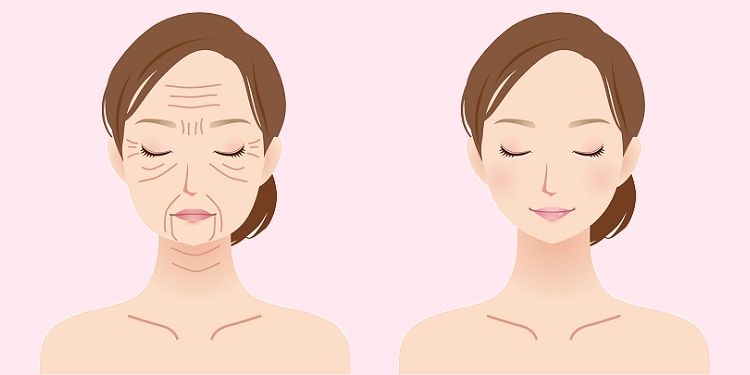What’s the Best Treatment for Loose or Sagging Skin?

If your face is starting to show signs of age, you may have asked the question, “What’s the best treatment for loose or sagging skin?”
There are actually several cosmetic procedures that promise to tighten lax skin…but how do you know what works, and which is the right one for you? It’s always best to seek advice from a skin care expert.
So, what is the best treatment for loose or sagging skin?
The dermatologists at Skin Cancer Specialists P. C. & Aesthetic Center have the answer for you – it’s the innovative Ultherapy skin rejuvenation treatment. Ultherapy is preferred because of its unique action and superior technology that combine to refresh, and recondition the skin.
Ultherapy uses safe and proven ultrasound energy to lift and tighten the skin, and improve signs of aging. Sagging skin is primarily a consequence of collagen loss. The loss of collagen results in a steady decline in skin quality, and causes a slow slide of facial features.
The Ulthera system is able to kick-start collagen production, and this strengthens the skin from deep within, and that’s why it can significantly improve skin tone and texture. It targets the skin from the inside out, and does not harm the surface of the skin.
Treating the face and neck with Ulthera can take 60-90 minutes. Most patients only need one treatment to get the desired results.
Related Post: Guide to Thermage® Wrinkle Treatments for Anti-Aging
What areas can Ultherapy treat?
Ultherapy can be used to lift and tone lax skin on the face, neck, and décolletage. The treatment will also improve lines and wrinkles, and lift the eyebrows.
How Ultherapy lifts the skin
The Ulthera ultrasound device emits sonic waves that target the underlying support layers of the skin, where collagen is found. The heat triggers a natural repair response in the tissue that starts the collagen rebuilding process, and causes the tissue to contract. Skin tone will improve over time, and it will also become firmer and more elastic.
Ultherapy uses cutting-edge ultrasound imaging, and this feature helps to improve the efficiency of the procedure. Ultrasound imaging facilitates visualization of the tissue in the dermal and subdermal layers of the skin. This allows physicians to direct the ultrasound energy to the areas where it’s needed most.
Ultherapy is generally well tolerated, but patients will feel some discomfort as the focused ultrasound energy is delivered below the surface of the skin.
Related Post: What’s the Typical Recovery Time for a Facelift?
What to expect
- Minimal side-effects: Patients may experience some slight numbness or swelling, as well as some tingling and tenderness. These side-effects usually last only for a short time.
- No downtime: With Ultherapy you don’t have to hide away indoors after treatment, as most patients are able to resume normal activities right away.
- A subtle, natural lift that makes you look slightly younger: Your cheeks will be plumper, jawline will be tighter, and facial contours will improve.
- Results that last for at least 12 months: The skin will continue to age, so some people opt for a follow-up treatment in the future. This will vary with each individual, as it all depends on how your skin ages.
You will certainly notice some initial improvement after your Ultherapy treatment, but the tightening and uplifting of loose skin will continue over the following 3-6 months.
Are you a good candidate?
If you are in your 40’s or 50’s with moderate degree of skin laxity, and your skin looks and feel less firm, you may be a good candidate for Ultherapy. It is also a good option for younger people looking to combat early signs of aging.
Individuals that may have previously undergone a facelift, but are experiencing some skin relaxation as time passes, can also benefit from Ultherapy.
Ultherapy is not meant to replace a facelift, but if you’re looking for a less invasive way to improve your loose, saggy skin, it may be the right treatment for you.
Related Post: Ultherapy® vs. Facelift – Which Results Last Longer?
In order to get the best results from Ultherapy, you should have the procedure done by a trained medical practitioner.
Additional Resources
Find a Practitioner for Ultherapy Treatments
- Clients in the greater Atlanta metro area can contact Skin Cancer Specialists P. C. & Aesthetic Center to find out more about the treatment. Call today for an appointment, or book one online at http://www.skincancerspecialists.com/locations-appointment/.
- Click here to visit Ultherapy.com to find a doctor that offers Ultherapy®
[Video] Meet Gina: Ultherapy Before & After Story
Below, see an Ultherapy review from Gina, a 46 year old celebrity makeup artist (published February 8, 2013)
[Video] How Ultherapy Stimulates Collagen Production
In the video below, learn how the Ultherapy procedure uses ultrasound to stimulate collagen production deep beneath the skin (published July 29, 2014).



